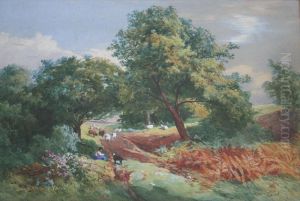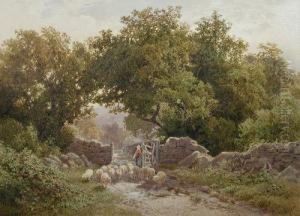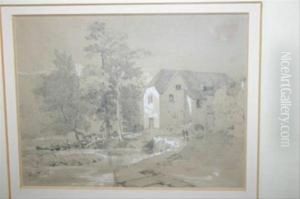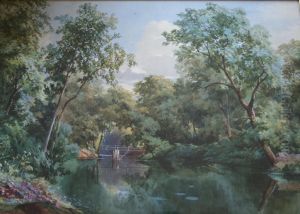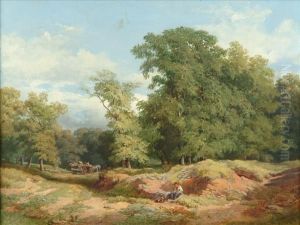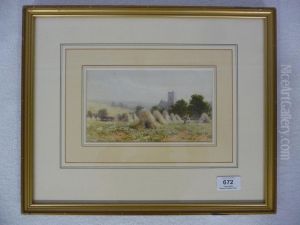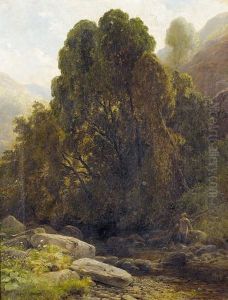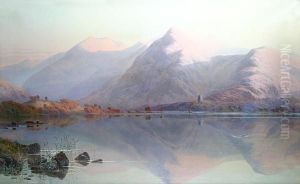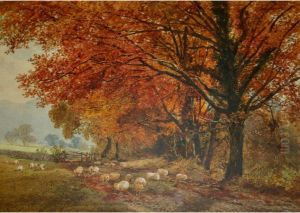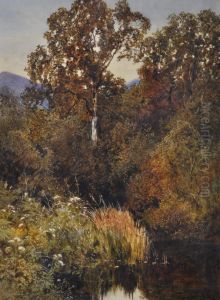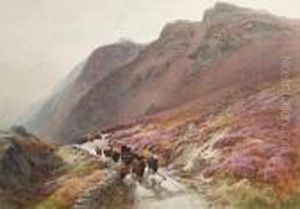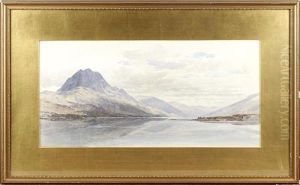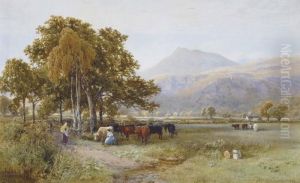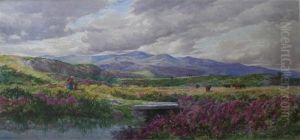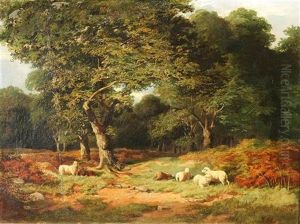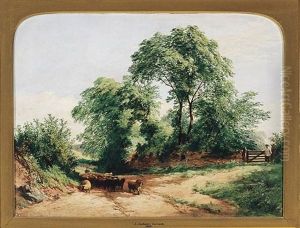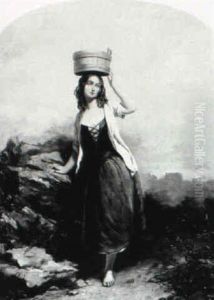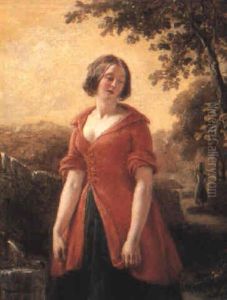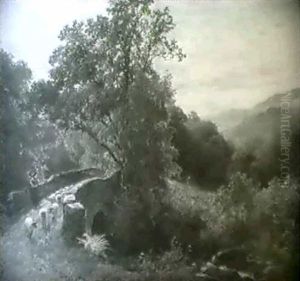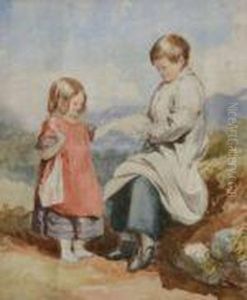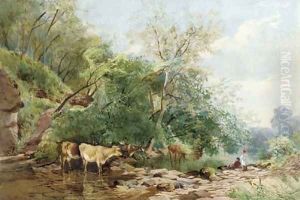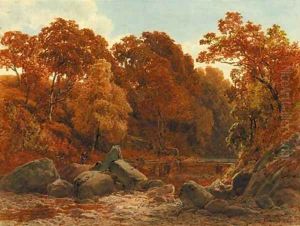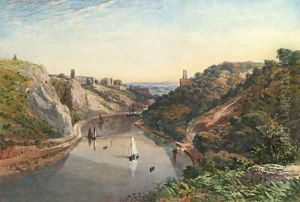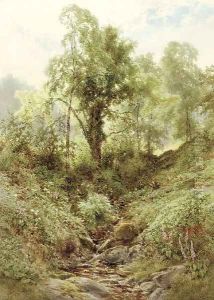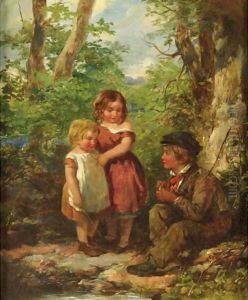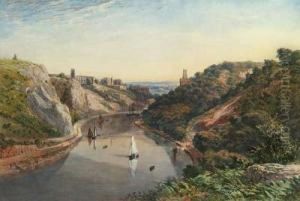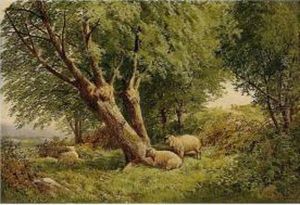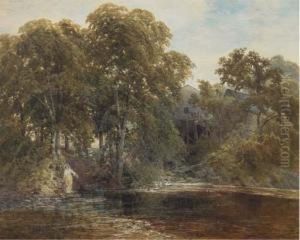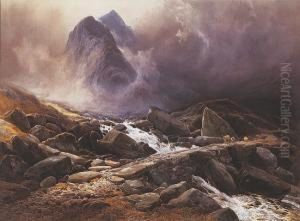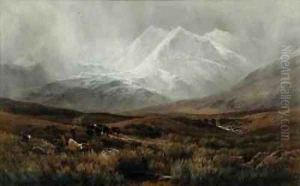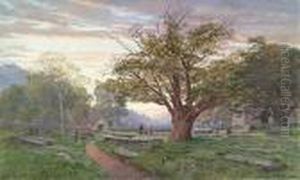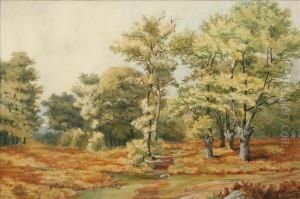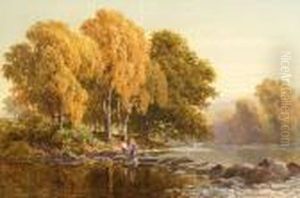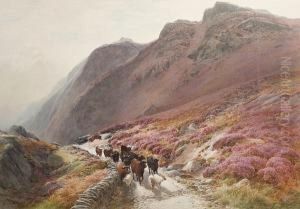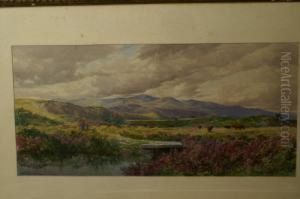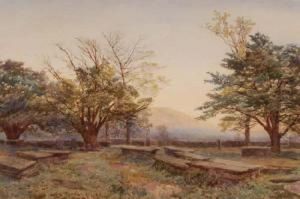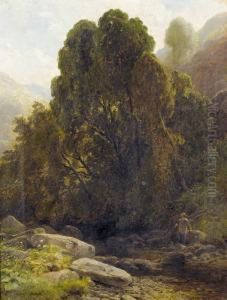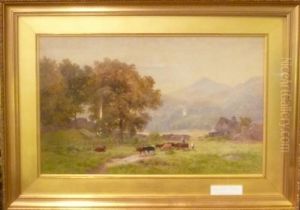James Jackson Curnock Paintings
James Jackson Curnock was a British artist born in 1833 in Bath, England. While not as widely recognized as some of his contemporaries, Curnock made contributions to the Victorian art scene, particularly in the realm of watercolor painting. His works often depicted landscapes and rural scenes, which were popular subjects during that period.
Curnock received his artistic training at the Bath School of Art, which was part of the Government School of Design network. These schools were established across Britain to improve the quality of design in the burgeoning industrial age. After his education, he became a member of the Society of British Artists, a rival group to the Royal Academy, which was known for its more liberal stance and its promotion of new artists.
During his career, Curnock exhibited his work at various venues, including the Royal Academy, the British Institution, and the Society of British Artists. His paintings were appreciated for their detailed representation of nature and their harmonious color schemes. Despite the fact that Curnock lived during a period of great innovation in the arts, with the rise of movements such as Impressionism, his style remained more traditional, focusing on the meticulous depiction of the English countryside.
Curnock's dedication to his craft and his ability to capture the serene beauty of rural Britain earned him a modest following. His works were often seen as a celebration of the English landscape, evoking a sense of nostalgia and a connection to the pastoral past, which resonated with Victorian sensibilities.
James Jackson Curnock passed away in 1891. While he may not have achieved the same level of fame as some of his contemporaries, his artworks remain a testament to the Victorian appreciation of landscape art and continue to be of interest to collectors and historians of British art.
